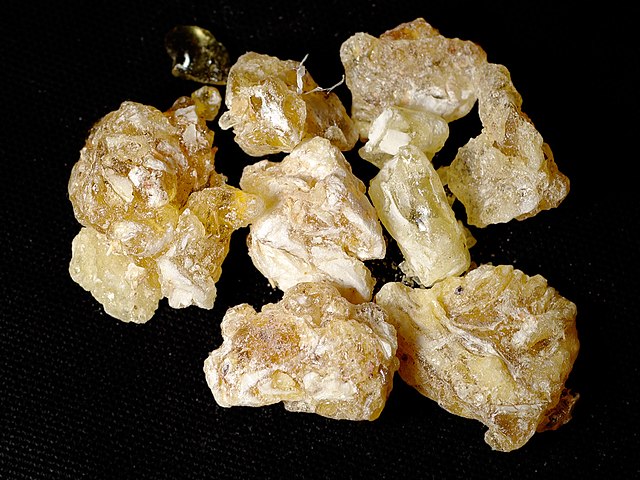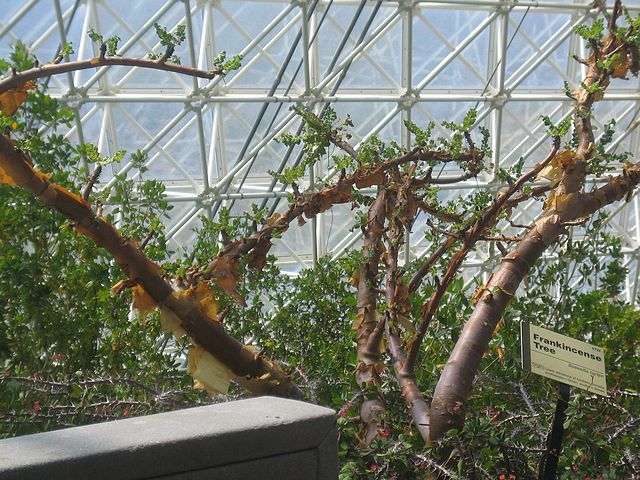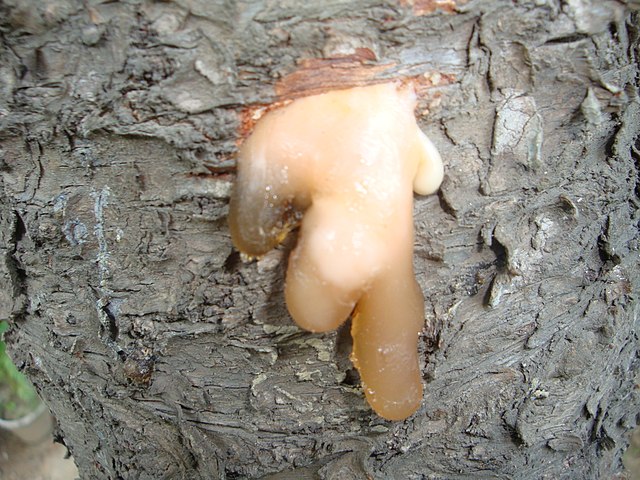Frankincense, also known as olibanum, is an aromatic resin used in incense and perfumes, obtained from trees of the genus Boswellia in the family Burseraceae. The word is from Old French franc encens. There are several species of Boswellia that produce true frankincense: Boswellia sacra, B. frereana, B. serrata, and B. papyrifera. Resin from each is available in various grades, which depends on the time of harvesting. The resin is hand-sorted for quality.
Frankincense
Boswellia carteri tree that produces frankincense, growing inside Biosphere 2
Flowers and branches of the Boswellia sacra tree
Indirect burning of frankincense on hot coal
In polymer chemistry and materials science, a resin is a solid or highly viscous substance of plant or synthetic origin that is typically convertible into polymers. Resins are usually mixtures of organic compounds. This article focuses mainly on naturally occurring resins.
Insect trapped in resin
Cedar of Lebanon cone showing flecks of resin as used in the mummification of Egyptian Pharaohs
Extremely viscous resin extruding from the trunk of a mature Araucaria columnaris.
The material dripping from an almond tree looks confusingly like resin, but actually is a gum or mucilage, and chemically very different.








